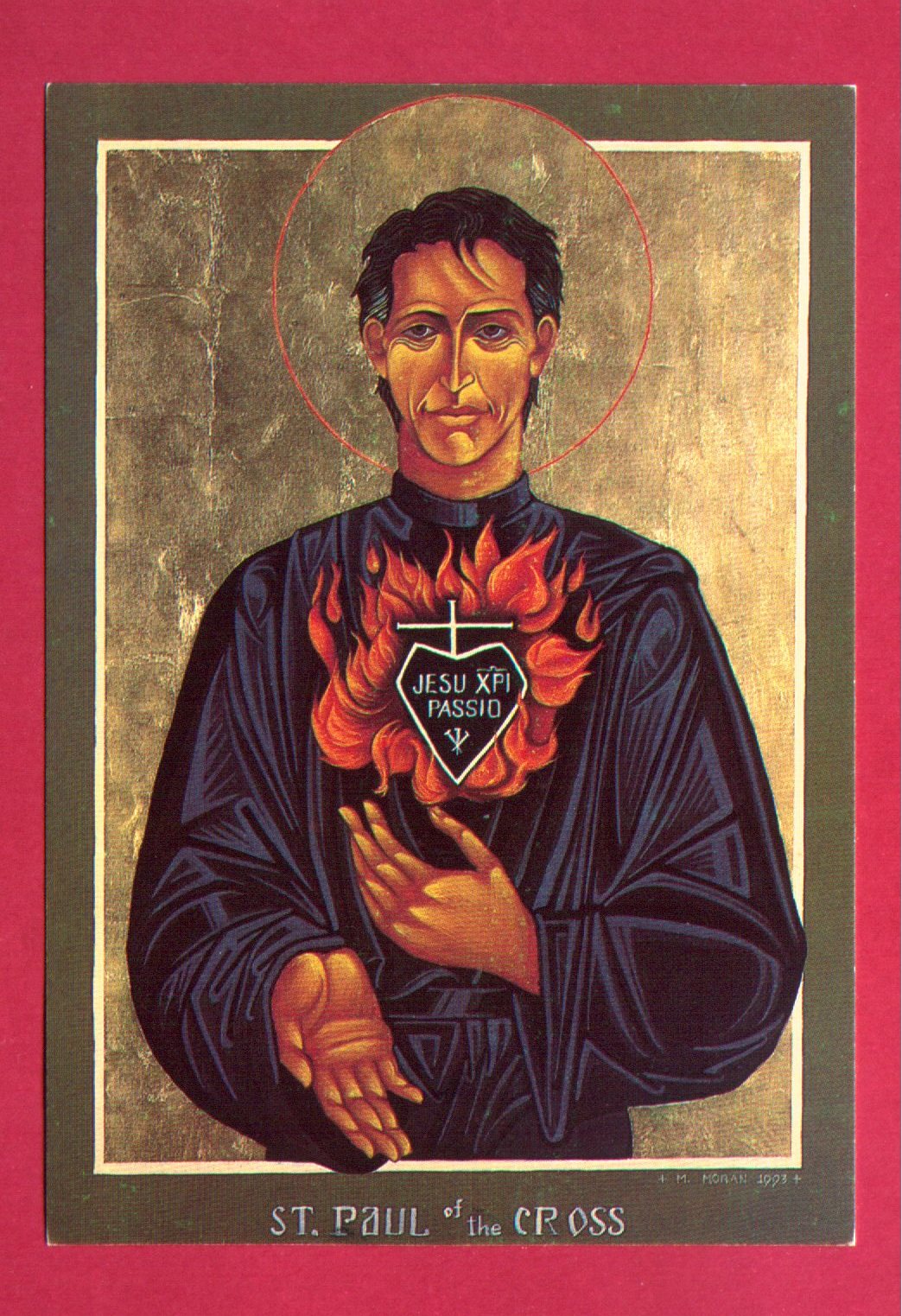Saint Paul of the Cross: Mystic & Founder of the Passionist Congregation
He was nineteen. His father wanted him to become a merchant like himself. His priest-uncle advised him to become a priest. A young lady from one of the better families hoped to be his wife.
But Paul Francis Daneo, born on January 3, 1694, in Ovada, Italy, had a different vision for his life. During his teen years he felt inwardly inspired and captivated by the Cross of Christ. Paul discerned God’s love for all people in the passion and death of Jesus Christ. Realizing all that Jesus had suffered in love for us, Paul wanted to love Jesus in return through prayer and preaching. This vision was hindered because Paul was the eldest son of a large family and, therefore, obligated to remain home and assist his father in supporting his younger brothers and sisters.
When Paul was 21 years old, he joined a crusade against the Turks, thinking this was the way God wanted him to serve. But after experiencing the violence and ruthlessness of war, Paul abandoned this way. He had an inner conviction that God would fulfill the vision by a crusade of a much different nature.
Returning to his hometown, Paul helped his family and dedicated himself to prayer and penance. In 1720 he talked with the local bishop, asking to be allowed to serve the Church as a hermit, a “holy man.” The bishop allowed Paul live in one of the town’s churches. Paul, wearing a long black robe as a sign of his commitment, took care of the church property and prepared the altar before the daily celebration of Mass. He was invited to teach religion to the children. Adults, recognizing in Paul the qualities of wisdom and holiness, came to him for advice. At times he was given permission to preach.
During this period Paul kept a diary and wrote a Rule, which contained his vision of how he would live his life. The Rule contained directives about prayer, fasting, exercise, spiritual disciplines, penances, charity, and many other qualities and activities Paul felt were important in living out a dedicated life. In 1721 Paul brought the Rule to the Vatican in Rome for the Pope’s approval. The guards, thinking him a beggar, turned him away. Paul, severely disappointed, rededicated himself to the vision God had given him. Returning to north of Rome, Paul invited others to join him. The men who followed Paul would become known as Passionists because of their dedication to and preaching of the passion and death of Jesus Christ. Paul did not receive definitive approval for the Rule until 1769.
Paul, now living in Rome, was ordained a priest in 1734. After a brief time as a hospital chaplain, Paul channeled his time and energy into preaching throughout Central Italy. He took the name Paul of the Cross.
Paul realized that many of his contemporaries had forgotten God’s love for them, had forgotten the healing grace of Christ’s Cross. In the 18th century life was not easy – the rich were rich – the poor, very poor. For the sick there was little comfort. For laborers there were few hours of rest. For ordinary folk there was a constant fear of war, famine and disease.
“The world lives unmindful of the sufferings of Jesus which are the miracle of miracles of the love of God. We must arouse the world from its slumber.” And so Paul did through thousands of letters he wrote and sermons he preached. Traveling where he was invited to preach, even to marshlands infested with malaria, Paul taught people how to pray and meditate upon the suffering and death of Jesus. Walking from town to town, church to church, for over 40 years, Paul preached the loving memory of the passion and death of Jesus Christ. The sick poor and the abandoned poor were special recipients of Paul’s concern and love. He would also preach to the clergy and remind them of their obligations to serve the poor.
During his long life of 82 years, Paul founded 12 monasteries, overcoming numerous obstacles. In 1771 he realized his life-long desire when he founded the first monastery of Passionist Nuns. Due to poor health he never visited the nuns but he had been forming them for years mostly through spiritual direction. Venerable Mother Mary Crucified of Jesus, who transferred from a Benedictine convent, was the first Superior.
After many years of preaching and serving the Passionist community as its founder and leader, Paul died in 1775. He was eighty-one years old.
I copied this from one of our Passionist men’s websites a few years ago. Unfortunately I cannot remember which one. Regardless, they deserve the credit for this short biography, not us.



